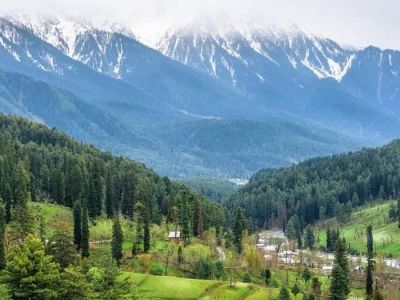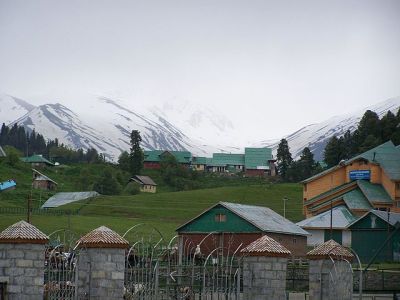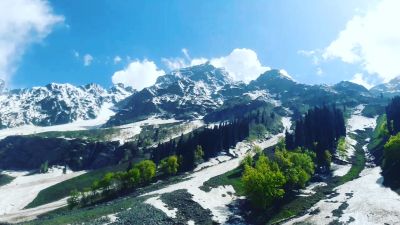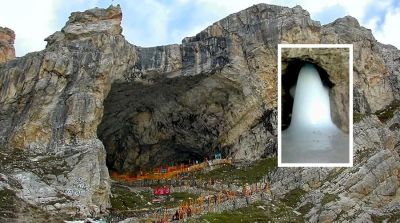The Intriguing Caves of Gulmarg: A Guide for Explorers
Gulmarg, located in the breathtaking Kashmir Valley of India, is famous for its picturesque landscapes, snow-capped mountains, and exhilarating outdoor activities. While this destination is predominantly known for its skiing and hiking opportunities, it is also home to a hidden gem that often goes unnoticed – the intriguing caves of Gulmarg. These caves hold a mysterious charm that beckons travelers and adventurers from all around the world.
The Geology Behind the Caves
Before we delve into the fascinating world of the caves, let's understand the geology that created them. Gulmarg is situated in the Pir Panjal Range, which forms part of the larger Himalayan mountain system. These mountains are made up of sedimentary rocks, primarily limestone and dolomite, which were formed millions of years ago when the Indian subcontinent collided with the Eurasian plate.
The combination of tectonic activity and weathering processes over time led to the formation of these captivating caves. The limestone and dolomite rocks, being soluble in water, created the perfect conditions for the underground water to carve out these natural wonders.
The Famous Amarnath Cave
One of the most renowned caves in Gulmarg is the Amarnath Cave. Located in the nearby town of Pahalgam, this cave is of great religious significance to Hindus. Every year, during the months of July and August, thousands of devotees embark on a pilgrimage to this sacred site. The cave is believed to be the abode of Lord Shiva, with a naturally formed ice stalagmite representing the lingam or the symbol of Shiva.
Legend has it that Lord Shiva revealed the secret of immortality to his wife, Goddess Parvati, in this cave. The journey to the Amarnath Cave is not for the faint-hearted, as it involves a challenging trek through rugged terrain and icy slopes. However, the spiritual experience and the stunning natural beauty make it all worthwhile.
The Hidden Caves of Gulmarg
While the Amarnath Cave is the most famous, there are several other hidden caves in Gulmarg that are waiting to be explored. These caves are hidden away in the mountains, surrounded by lush greenery and pristine landscapes. Many of these caves have intricate formations of stalactites and stalagmites, created over thousands of years by the slow dripping of mineral-rich water.
One such cave is the Apharwat Cave, located near the Apharwat Peak in Gulmarg. This cave is not easily accessible and requires a skilled guide to navigate through the snow-covered trails. Inside the cave, you will be mesmerized by the bizarre formations and the eerie silence that surrounds you.
Another notable cave is the Baba Reshi Cave, named after the revered saint who is believed to have meditated in this cave centuries ago. This cave is situated near a famous shrine dedicated to Baba Reshi and offers a serene and spiritual atmosphere for visitors.
Exploring the Caves
Exploring the caves of Gulmarg is a unique experience that takes you into the depths of the earth, unraveling its secrets one step at a time. However, it is important to remember that cave exploration can be challenging and potentially dangerous. Here are a few tips to ensure a safe and enjoyable experience:
- Guided Tours: Always opt for guided tours with experienced local guides who know the caves inside out. They can provide valuable insights and ensure your safety throughout the journey.
- Equipment: Wear appropriate clothing and footwear for cave exploration. Carry a flashlight, helmet, and other necessary equipment to navigate through the dark and narrow passages.
- Physical Fitness: Cave exploration requires a certain level of physical fitness due to the uneven terrain and strenuous climbs. Ensure you are in good health and inform your guide of any medical conditions.
- Safety Precautions: Follow all safety instructions provided by your guide. Stay with the group, avoid touching any formations, and be cautious of slippery surfaces.
- Leave No Trace: Respect the delicate environment of the caves and leave no trace behind. Avoid littering and damaging any natural formations.
Conclusion
The caves of Gulmarg are an intriguing and lesser-known aspect of this beautiful destination. Exploring these hidden treasures is not only a thrilling adventure but also a chance to connect with the geological marvels that make up our planet. So, the next time you visit Gulmarg, don't forget to venture into the depths of the earth and discover the enchanting world of its caves.
We hope this guide has inspired you to embark on a journey to explore the caves of Gulmarg. Share your thoughts and experiences in the comments below, and don't forget to share this blog post with other travel enthusiasts. Happy cave exploring!
Disclaimer : The information provided in this blog is for general informational purposes only. While we strive to keep the content accurate and updated, TravelSetu assumes no liability for errors or omissions. If you believe any part of this blog infringes your rights or causes concern, please notify us immediately at info[at]travelsetu[dot]com so that appropriate action can be taken.

















